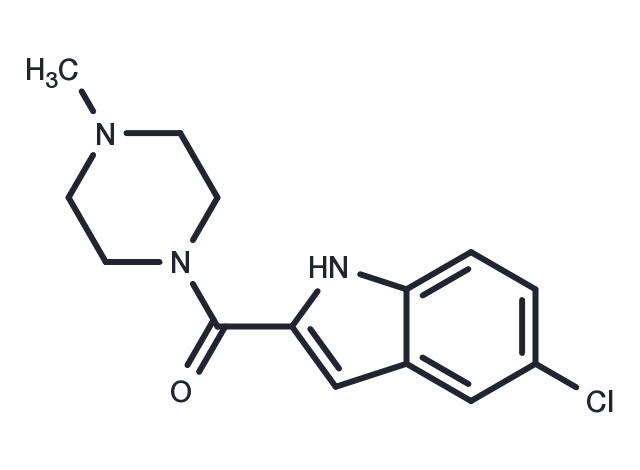Powder: -20°C for 3 years | In solvent: -80°C for 1 year


JNJ-7777120 is the first potent and selective non-imidazole histamine H4 receptor antagonist with Ki of 4.5 nM, exhibits <1000-fold selectivity over the other histamin receptors.

| Pack Size | Availability | Price/USD | Quantity |
|---|---|---|---|
| 5 mg | In stock | $ 64.00 | |
| 10 mg | In stock | $ 97.00 | |
| 25 mg | In stock | $ 173.00 | |
| 50 mg | In stock | $ 288.00 | |
| 100 mg | In stock | $ 463.00 | |
| 500 mg | In stock | $ 987.00 | |
| 1 mL * 10 mM (in DMSO) | In stock | $ 67.00 |




| Description | JNJ-7777120 is the first potent and selective non-imidazole histamine H4 receptor antagonist with Ki of 4.5 nM, exhibits >1000-fold selectivity over the other histamin receptors. |
| Targets&IC50 | H4 receptor:4.5 nM(Ki) |
| In vitro | JNJ 7777120 administration in mice inhibits the migration of tracheal mast cells from connective to epithelial tissues induced by histamine. Furthermore, JNJ 7777120 treatment in mice-derived bone marrow mast cells suppresses histamine-induced chemotaxis and calcium influx. In a peritonitis model induced by yeast polysaccharides in mice, JNJ 7777120 markedly inhibits neutrophil infiltration. The compound demonstrates oral bioavailability, with a 30% rate in rats and 100% in dogs, and a half-life of 3 hours for both species. |
| In vivo | JNJ 7777120 is an effective, selective antagonist for the H4 receptor, with little to no affinity for over 50 other targets. It binds with high affinity to the H4 receptor, exhibiting over a thousand times greater selectivity compared to other histamine receptors. |
| Synonyms | JNJ7777120 |
| Molecular Weight | 277.75 |
| Formula | C14H16ClN3O |
| CAS No. | 459168-41-3 |
Powder: -20°C for 3 years | In solvent: -80°C for 1 year
1eq. HCl: 27.8 mg/mL (100 mM)
DMSO: 13.9 mg/mL (50 mM)
You can also refer to dose conversion for different animals. More
bottom
Please see Inhibitor Handling Instructions for more frequently ask questions. Topics include: how to prepare stock solutions, how to store products, and cautions on cell-based assays & animal experiments, etc.
JNJ-7777120 459168-41-3 GPCR/G Protein Immunology/Inflammation Neuroscience Histamine Receptor JNJ 7777120 JNJ7777120 Inhibitor inhibit inhibitor
